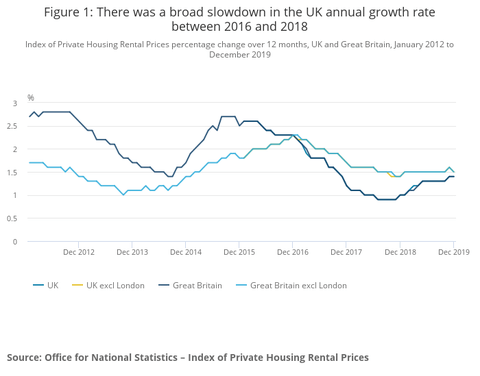Buy to let rents jumped 1.4% last year, according to the latest official data.
Annual rent increases had plateaued at a monthly 1.3% increase between May and October, but increased to 1.4% in November and stayed at that point in December, says the Office for National Statistics.
The last time rents had hit that mark were in November 2017 after 18 month of decline and they slipped to a low of 0.9% between July and November 2018.
Although average rents across the UK were up last year, the rise was 1.2% in Wales and 0.6% in Scotland.
In London, the year-on-year increase was 1.2%, a regional climb of 0.2% from 1% in November.
In monetary terms, UK rents showed a £7 a month rise for every £500 of rent between December 2018 and last December.
ONS records for buy to let rents started in January 2015 and show an 8.5% rise to the end of 2019.
By region in England, the highest rent rise for 2019 was in the South West (+2.2%), followed by the East Midlands (2.1%), Yorkshire and the Humber (1.9%) and the East of England (1.5%).
The lowest rent growth was in the North East (+0.5%), followed by the capital and the North West, which both increased by 1.2%.
When London rents are stripped out of the English data, tenants are paying an extra 1.6% year-on-year.
The ONS data covers new and existing tenancies.
Tenant referencing firm Homelet has published UK buy to let rent data for last year which shows rents increased 3.5% year-on-year to the end of December 2019, with the average monthly payment standing at £953 a month.
Highest rent growth was in Wales, hitting 9.7% and an average payment of £653, while the lowest was in the South West, up 0.5% to an average £840.
The firm says the data is based on achieved rents from landlords checking tenant references through the company’s service.




